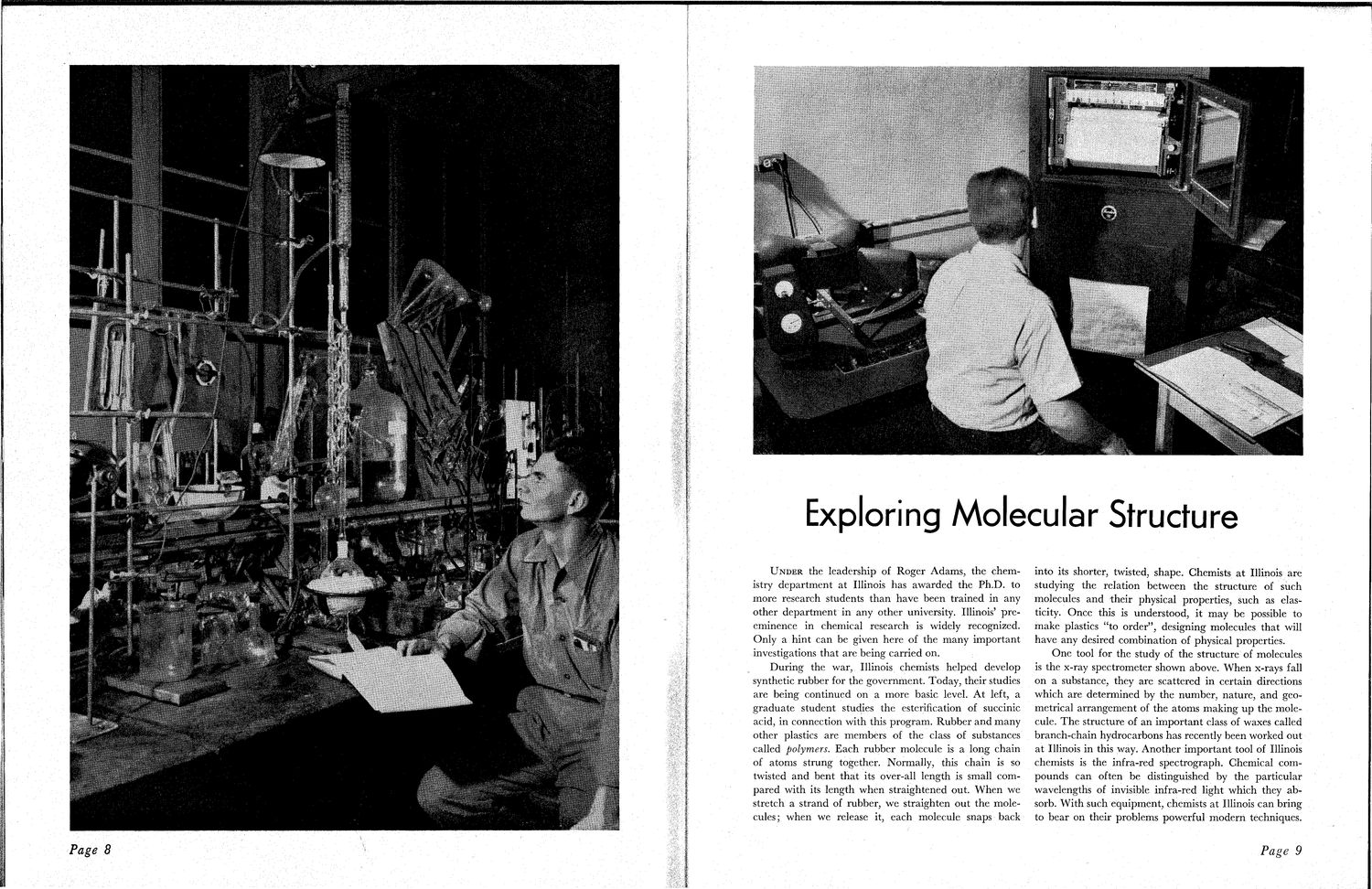| |
| |
Caption: Book - Research on Campus (1949)
This is a reduced-resolution page image for fast online browsing.

EXTRACTED TEXT FROM PAGE:
Exploring Molecular Structure UNDER the leadership of Roger Adams, the chemistry department at Illinois has awarded the Ph.D. to more research students than have been trained in any other department in any other university. Illinois' preeminence in chemical research is widely recognized. Only a hint can be given here of the many important investigations that are being carried on. During the war, Illinois chemists helped develop synthetic rubber for the government. Today, their studies are being continued on a more basic level. At left, a graduate student studies the esterification of succinic acid, in connection with this program. Rubber and many other plastics are members of the class of substances called polymers. Each rubber molecule is a long chain of atoms strung together. Normally, this chain is so twisted and bent that its over-all length is small compared with its length when straightened out. When we stretch a strand of rubber, we straighten out the molecules; when we release it, each molecule snaps back into its shorter, twisted, shape. Chemists at Illinois are studying the relation between the structure of such molecules and their physical properties, such as elasticity. Once this is understood, it may be possible to make plastics "to order", designing molecules that will have any desired combination of physical properties. One tool for the study of the structure of molecules is the x-ray spectrometer shown above. When x-rays fall on a substance, they are scattered in certain directions which are determined by the number, nature, and geometrical arrangement of the atoms making u p the molecule. T h e structure of an important class of waxes called branch-chain hydrocarbons has recently been worked out at Illinois in this way. Another important tool of Illinois chemists is the infra-red spectrograph. Chemical compounds can often be distinguished by the particular wavelengths of invisible infra-red light which they absorb. With such equipment, chemists at Illinois can bring to bear on their problems powerful modern techniques. Page 8 Page 9
| |